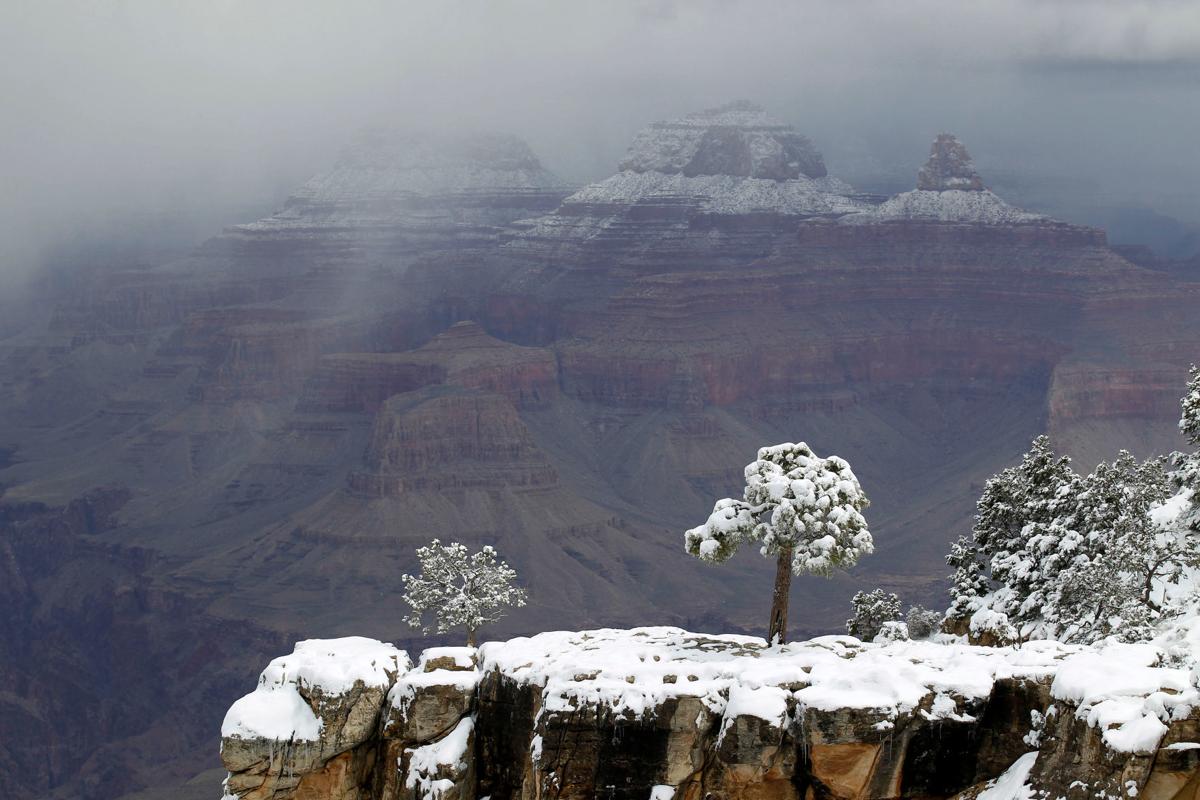Could millions of years of geological history be taken down by climate change?
At 277 miles long, 18 miles wide and over a mile deep, Arizona’s Grand Canyon is home to several major ecosystems, hundreds of plant species and 90 animal species.
Tuesday, Feb. 26, marks 100 years since the Canyon was designated a national park.
Since the 19th century, the Earth’s average surface temperature has risen by 1.6 degrees Fahrenheit, with most of the warming occurring in the last 35 years. According to the Grand Canyon National Park Climate Action Plan, changes in climate could impact the canyon’s ecosystems, vegetation and wildlife habitats.
Brian Gootee, a research geologist and tribal liaison with the Arizona Geological Survey, works along with his colleagues to enhance public understanding of Arizona’s geological characteristics, mineral resources and geological hazards.
As a Phoenix-based researcher, Gootee tends to work mostly in Central and Northern Arizona. He has also been a backpacking instructor with the Grand Canyon Conservancy Field Institute for 15 years and has led many trips into the canyon, teaching backpackers about the Canyon’s history and geology.
Gootee explained that it is difficult to predict exactly how climate change will affect the Grand Canyon, or anywhere else, because there are so many variables that go into climate. However, he said the more that researchers identify, collect and analyze data, the more they continue to learn what it means to have impact from climate change.
“It’s fair to say that the predictability of weather seems to be less so (with climate change),” Gootee said. “People often reference storms being more intense or frequent, or less frequent but way more intense. In the Grand Canyon, when it comes to climate change, there are definitely some things that are going to be impacted.”
Gootee cited groundwater withdrawal as one of the most significant potential impacts of climate change in the Canyon. Increase in groundwater use or pumping can cause declining groundwater tables, which is the level below the surface of the ground where water can be found. This could then result in declining spring levels throughout the canyon.
“The majority of ecosystems and wildlife rely on these springs, which are the minority of the Grand Canyon real estate. There aren’t that many of them,” he said. “So, the impact on the springs will have a huge impact on the ecosystems on all levels.”
Another potential impact of climate change on the Grand Canyon is debris flow into the Canyon’s water sources.
“If you do have a relationship between intensity of storms, regardless of how frequent they are, then you tend to get more storm-related hazards like debris flows, sediment being dumped into the river, which is normal,” Gootee said. “But if you increase the amount of sediment, it wreaks havoc on the beaches and where the tributaries intercept with the Colorado River.”
In an effort to counter the impact of climate change, the Grand Canyon National Park has been working to reduce its greenhouse gas emissions 30 percent by 2020 and has implemented a plan to help the park’s natural resources adapt to climate change.





